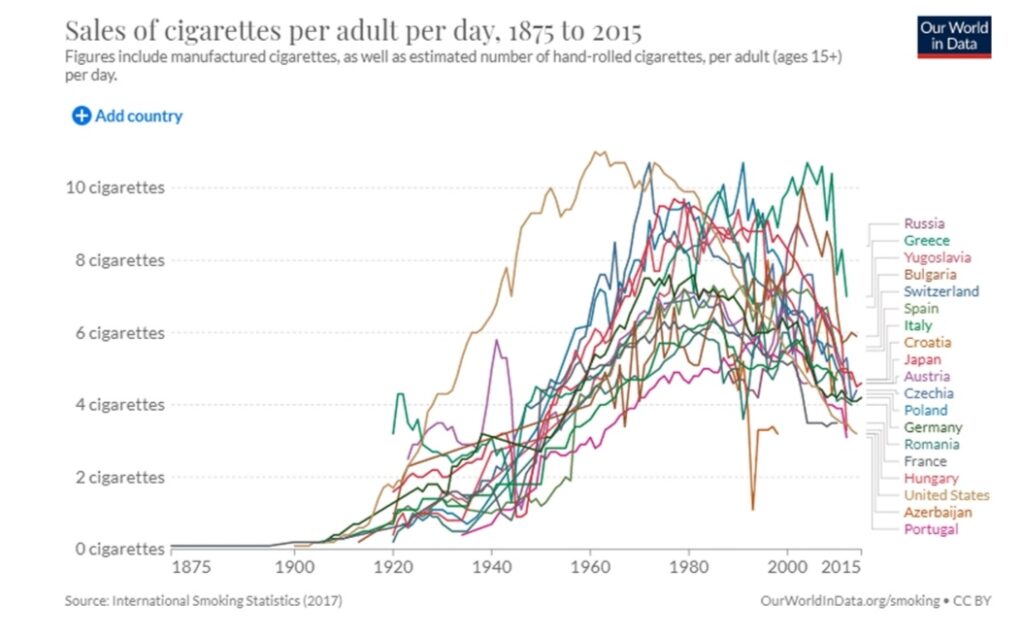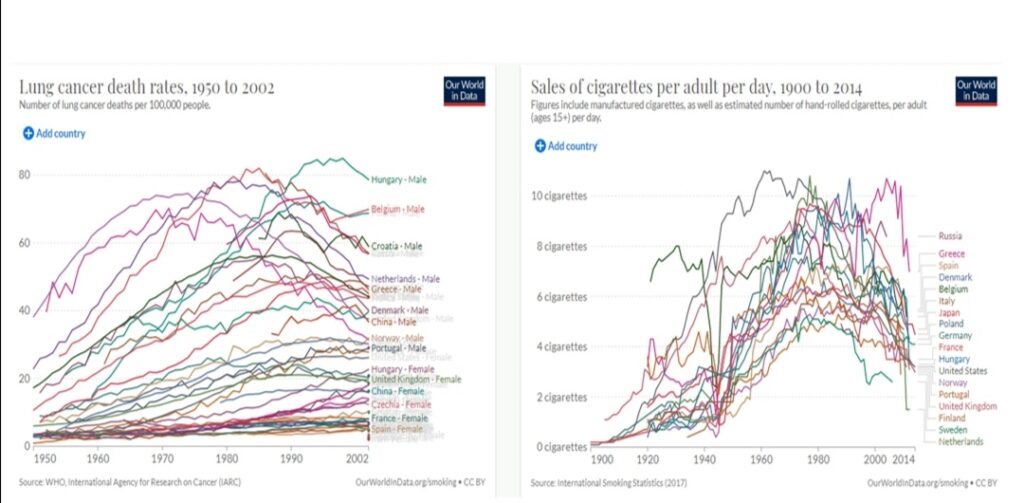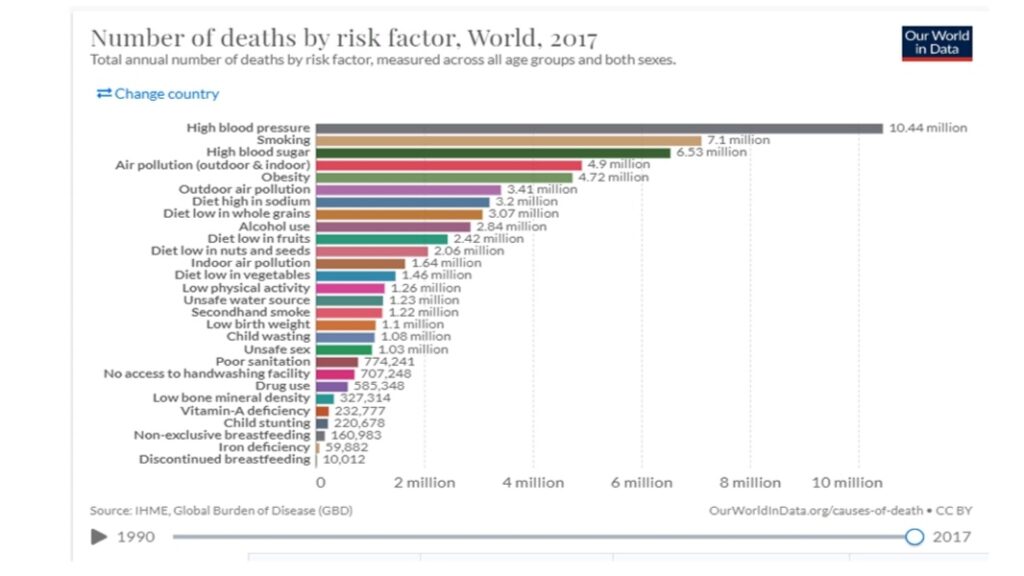
( Capital and death trade )
Deputy Minister of Health, announced the financial turnover of almost 1 billion dollars of the tobacco industry in the country. The aromatic tobacco contains 7000 chemical, 70 carcinogens and 400 toxins and the trade in this kind of material is the trade of death, just as the production, sale and exchange of industrial-agricultural commodities is full of pesticides and other additives in order to maintain the longevity of the goods is such playing with the life of the working masses. In Iran, about 8 million people (according to governmental agencies in 2021, which is the lowest possible figure) consume tobacco and about 65 billion cigarettes are consumed annually. Unfortunately, the age of consumers including hookah users has decreased and also the growing desire of women to consume these tobacco products increased. Regarding the activities of foreign tobacco companies in Iran, the Deputy Minister of Health of the capital state has said that “the Korean, Japanese, British and American companies are producing tobacco products in Iran. The Koreans left Iran with the start of sanctions, but their tobacco company is active in the counntry. the American companies are not allowed to operate in Iran, but T.A.B company, in cooperation with British companies jointly produces tobacco products in Iran, and also the Japanese company G.P.I produces Winston tobacco in Iran. He announced the development statistics of the tobacco industry as follows : in 2015, there were 7 units of tobacco production in the country, which has reached to 23 units in 2020, which means a 4 times growth. In no industry branch have we seen a 4 times increase in such period. Also, the number of tobacco production units in 2015 was 15 units, which has now increased to 39 units.” Now let´s refer to some figures in this realm. 8 international companies sold 140 billion dollars of cigarettes last year, in meanwhile every year, 8 million people worldwide die because of the effects of tobacco consumption. In Iran, 60,000 people die every year due to consumption of tobacco, last year, Iranians smoked 65 billion cigarettes ; in other words, 783 cigarettes have been smoked by each Iranian. Of course, the tobacco market is not limited to cigarette production and according to statistics, Iranians have consumed more than 10,000 tons of hookah tobacco last year. According to statistics provided by the Ministry of Industry and Mines, during 2019, Iranians consumed a total of 65 billiion and 110 million cigarettes which, considering an average population of 83 million people, shows 783 cigarettes per capita per Iranian. Of course, these numbers are for smoking and don´t include all tobacco products. Statistics from the Ministry of Industry & Mines show that out of about 65 billion cigarettes consumed in the counntry last year, about 55 billion of that were produced domestically and 10 billion of those cigarettes have been smuggled into the country. The presence of foreign companies in Iran, from this perspective, is significant that the number of cigarette manufacturing companies in Iran in 2014 was only 7 companies with an annual production of 29 billion cigarettes, which this amount in 2016 to 12 companies with the production of 45 billion cigarettes and has reached to 23 manufaturing companies with production of 55 billion cigarettes in 2019. The surveys also show that 855 million dollars in form of foreign investment has been attracted to Iran over the past year, more than half of which is said to have been in the tobacco industry. Capitalist production is the production of commodities, and it´s said that goods are primarily an object that meets some kind of human need, and this need can be physical or mental and psychological. This product enters the exchange process and is transferred to another person who consumes it. Capitalism, by exploiting the labor force of worker, not only produces commodities but also creates the needs to consume them and this need is both physical and mental too. Many commodities were also produced in pre-capitalist formulations, cigarettes and tobacco are among the commodities that have been cultivated and harvested in close connection with the emergence and expansion of industrial capitalism for personal and collective consumption and been packaged and presented in various forms. If in the past, humans exchanged the product of their labor force on the basis of the necessary human labor force in it but now this whole exchange is between the living and dead labor, between the commodity that is manifestation of the living labor and capital that is manifesting the dead labor but under another one´s property, it´s owned by the capitalist, it´s capital that determines the type of commodity, the quantity and the means of producing it, whether it´s a refreshing drink or a bomb or mortar, or drugs and tobacco that are deadly, it makes no difference to capital , only the product of human labor force, condensed human labor which is socially necessary labor time that makes a profit from selling it. In the process of capitalist production of goods is the worker´s relation with his&her work, with themselves (hers&his) with other workers, with life and everything is a relation out from their existence and it´s between objects. It´s his&her work is becoming out from his&her existence, alien to and against him&her, such a god , and totally enemy, the coercive force which dominates his&her everything. It´s their dead work which is ruling their existence, in economy and politics, civilization and thoughts, culture and ethics, habits, doctrine and ritual and manner. In the process of production, it alienates human social activities and against him&her, and transforms the needs of capital for self-expanding into the human´s needs and in fact, it considers thesse needs created by capital against him&her and the needs and interests of their human life. Just as the coercive sale of his&her labor force is considered a free and voluntary exchange and it considers the consumption of deadly goods as his&her optional and free choice.

Cigarette production and sales first began and increased in the capitalist countries of the West and Russia in the early twentieth century with the beginning of industrial capitalism. Since then the process of tobacco production has gone through a cycle of up and down in a century. This process of total capital of some new countries such like China, and Bangladesh, India and Myanmar with couple of billions population in recent years, they´ve had mass production and sales in this realm. In the diagram above we see the average number of cigarettes sold per person over the age of 15 , per day in many Western capitalist countries ( USA and Europe ), Japan and Russia.

The chart above shows the precentage of the country´s population in smoking in 2021.
Tobacco is the common name of several plants under the name of Nicotiana and it´s also a general term for any product made using cooked tobacco leaves such as cigars. Tobacco products are addictive and because of the stimulant nicotine in tobacco leaves, quitting its consumption is challenging. According to the World Health Organization, tobacco kills more than 8 million people worldwide each year which includes both somkers and non-smokers ( those who are exposed to secondhand smoke ). The US Centers for Disease Control says that tobacco is the main cause of some unpreventable diseases, disability and death in USA. Tobacco consumption increases the risk of lung, mouth, heart disease such as high blood pressure and blood clotting. Smoking also increases the risk of heart attack and stroke, leading to tooth and gum decay and skin wrinkles. In general, today the highest rates of smoking are observed in Southeast Asia and the Balkan region of Europe. People in Western Europe and the USA tend to reduce smoking rates but its consumption´s rate returns to normal. Chile has one of the highest smoking rates in the world. From the top five countries with the highest smoking rates in the world in 2018, three countries on the Pacific Islands, one country is in Southeast Asia and another in South America. But the rank of these countries changes and some other take the place of the first ranks. In many countries in South and Southeast Asia, smoking rates are high for men and low for women. in Indonesia, for example, men smoke 76.20 precent and women smoke 3.60 precent. But this is also variable, as in European countries the increase in smoking by women is more than men but over the past decades, however, the increase in smoking has belonged to men. The minimum smoking age in the USA is 21 years, the age of smoking increased from 18 to 31 in Dec. 2019. But smoking rates vary from state to state, with the highest prevalence in West Virginia and the lowest in Utah.
Here are 7 countries with the highest smoking rates in 2018 :
Myanmar people with 46% , Chile 45% , Lebanon 43% , Bangladesh 39% , Greece 39% and Bulgaria 39% .
Smoking rate in Iran according to the World Health Organization is 14% of the total population ( men 24.6 precent and 3.5 precent women in 2020 ) that means 12 million people and this contradicts the report of 8 million of the Iranian Ministry of Health.

This diagram shows the death rate from lung cancer in the United States and many Western capitalist countries since the 1950s . In many countries we are witnessing a significant increase, peak and then a significant decrease in the incidence of lung cancer mortality in the twentieth century. These peak trends are directly related to the production and consumption of cigarettes. In the United States, the death toll peaked in the 1980s. in Spain, this peak was only later in the 1990s, and in Russia and Bulgaria this peak was in the last century. For the entire twentieth century, it´s estimated that about 100 million people died as a result of smoking, most of them in Western Europe, the United States and Russia. Smoking has been a major risk factor for early death in the last century. Global studies by the World Health Organization estimate that about 8 million people die each year as a result of smoking and this shows that the door is turning on the same heel of a century ago. This means that about 15% of global deaths are due to smoking, and in some countries this ratio has been more than 1 to 5 . Mortality by smoking usually affects the elderly population : more than half of all deaths occur in people over the age of 70 , 93% were over age of 50 years old. One of the reasons is that the occurrence of side-effects of consumption and even inhalation of cigarette and tobacco smoke takes a relatively long time to lead to serious side-effects. Another diagram shows the amount of cigarette sales per person. Smoking is a risk factor for lung cancer and we see that the process of lung cancer is followed by a delay of about 20 years in smoking. In 2017, 7.1 million people worldwide died by smoking. Lung cancer data for women in the United States can be added to this chart. Smoking was once common in the United States for men, with men having a much higher incidence of lung cancer. Smoking became more common among women as the lung cancer deaths among women peaked later.

The annual World Disease Study estimates that 8.5 million peoplle die each year by smoking. 7.1 million of these deaths are due to smoking, there are 1.3 million non-smokers who die from exposure to secondhand smoke. ( another 56,000 people die each year from chewing tobacco ). The 71% majority of people who die from smoking are men. It should be noted that the role of cigarettes and tobacco in the incidence and severity of heart disease and hypertension is also evident.
Hassan Abbasi
Nov. 2021
The latest sudy can be found at the website of The Lancet :TheLancet.com/GBD


